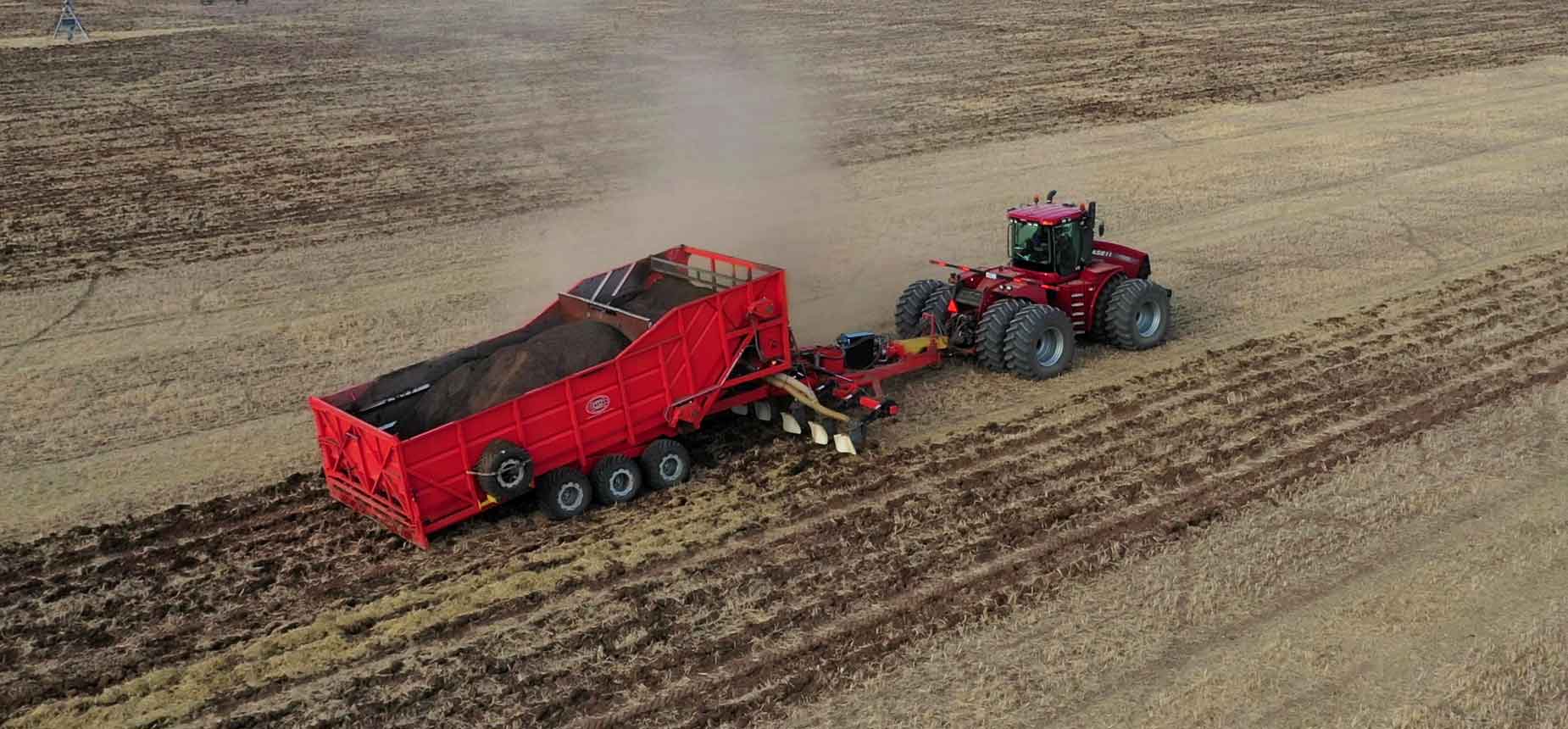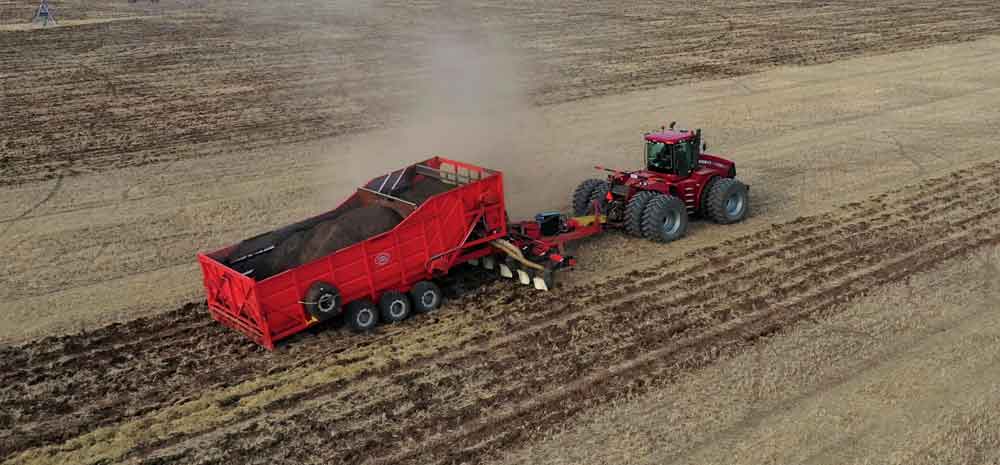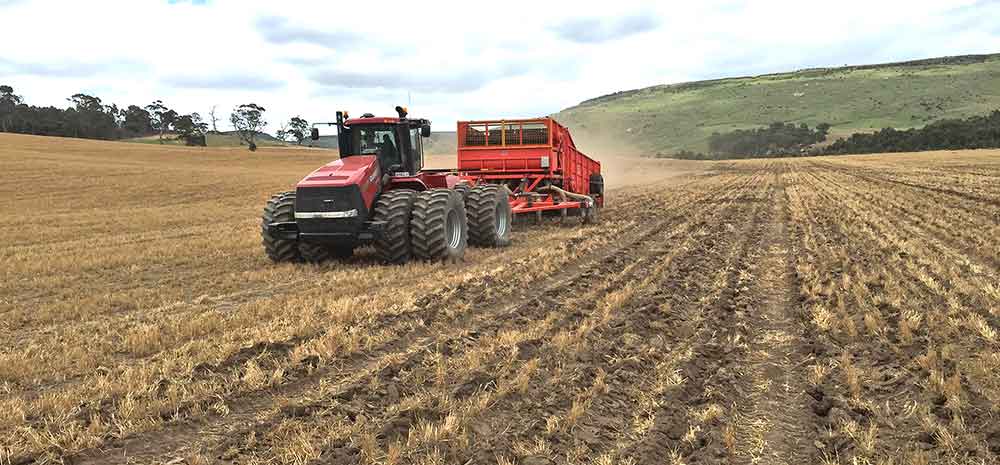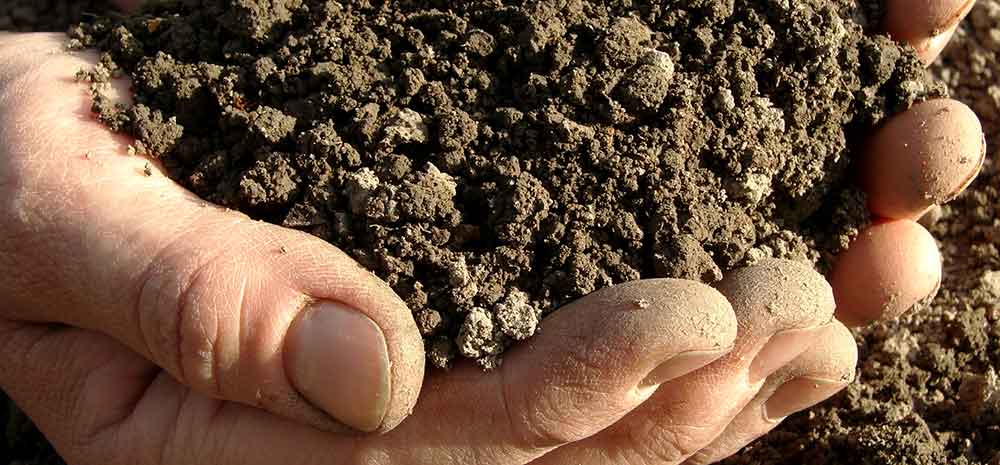Summary
In ‘A new practice for ameliorating dense clay subsoils’, published in Research Outreach (Issue 123, August 2021), La Trobe University associate professor and agronomist Peter Sale discusses the challenges farmers face in cropping in regions with productivity-constraining dense clay subsoils, and details the historical development, benefits and risks of ‘subsoil manuring’ as a means of improving the subsoil structure to ultimately increase crop yields.
Here, we provide a summary of the paper and our view on the key take-home messages.
What is the impact of dense clay subsoils?
Dense clay subsoils constrain productivity by:
- Restricting the amount of rainfall that can be captured and stored in the soil profile for use by crops.
- Causing waterlogging in periods of surplus rain leading to crop damage and loss (a very familiar issue off the back of a wet 2021).
- Reducing plant access to air and water at depth due to the poor soil structure with limited pore-space in the clay, thereby decreasing nutrient availability, restricting root proliferation, and restricting plant growth.
How does ‘subsoil manuring' address this?
The objective with ‘subsoil manuring’ is to create the conditions where clay particles can aggregate to increase pore space. This is achieved by:
- Deep banding high rates of nutrient rich organic amendment such as compost and animal manures into the subsoil.
- Stimulating the growth of crop roots in the subsoil.
- Triggering intense microbial activity which ultimately leads to the process of forming and stabilising soil aggregates, and increasing the pore space between these aggregates.
The transformed subsoil increases the availability of rain, air and nutrients to crop roots, thereby making it more functional and fertile, and, importantly, boosting crop growth.
How long do the benefits last?
In Sale’s research, yields of the 2nd, 3rd and 4th crops grown on subsoil-manured land exceeded that of yields of commercial crops.
“The benefit appears to be long lasting.”
What are the risks?
In Sale’s view, the key risks to be aware of are:
- Dry conditions in the season following subsoil manuring: the degree of success is driven by rainfall. To achieve subsoil transformation, roots need to proliferate at depth, and this can only happen if water has infiltrated deep into the profile. However, Sale notes that crops will respond in the following season if conditions improve.
- Financial risk: the practice requires significant upfront investment to achieve improvements in soil productivity. Sale calls for more research into reducing upfront costs through optimising the amendment type, application rate and placement depth.
Terra Nova Ag’s View on Key Take-Home Messages:
1. The search for new production frontiers:
- There is a critical need to improve soil productivity and its resilience, in the face of growing demand for grain and oilseeds amidst increased climate variability. This highlights the need for ongoing research into new production frontiers and discovery of new innovations.
- 'Subsoil manuring’ has proven to deliver transformational productivity gains. However, it is not a “silver bullet” solution. Rather, it is a practice that, when undertaken in the right conditions, can contribute to increasing productivity and improving resilience.
2. The case for an investment:
- As Sale points out, the upfront investment in subsoil manuring is significant. However, it needs to be taken in the context of returns.
- Recent research has shown that a payback on investment of between three and four years is achievable. Our own experience is consistent with this and in a number of cases a shorter payback has been achieved. Additionally, the life of the investment is at least 7-10 years providing very attractive returns on the investment.
- Importantly, with rising land prices, ‘subsoil manuring’ provides a more favourable avenue for increasing productivity and profitability compared to purchasing more land.
3. The importance of experience:
- Sale’s paper illustrates the complexities of the subsoil environment, and the importance of understanding the conditions prior to committing to undertaking a subsoil manuring project.
- Understanding the subsoil conditions, the constraints, the anticipated responsiveness to subsoil manuring and how to undertake the work (i.e. machinery required, amendment type, application rate and depth, and time needed) is critical to giving a project the best opportunity for success.
- An example of the need to understand the subsoil conditions is the impact of pH in the subsoil. A highly alkaline subsoil (pHwater >9.0) or highly acidic subsoil (pHwater < 5.0-5.2) are likely to require additional materials that are added to the organic amendments, thereby tailoring the amendment to suit the problem.
- In this respect, the Terra Nova Ag team prefers to use the broader term ‘subsoil amelioration’, rather than the more specific term ‘subsoil manuring’.
- Terra Nova Ag’s extensive experience in subsoil manuring and amelioration over 15 years, commercial scale machinery, broad research network, customised approach to program design, and focus on optimising returns provides clients with a complete solution to addressing subsoil constraints today.






